Typecast
The Architectural League’s long-term investigation into architectural typologies that have come to be seen as outdated, stagnant, or obsolete.
In This SeriesCelebrate ten years of Urban Omnibus and support ten more years of fresh, independent perspectives on citymaking with a donation today!
Clad in stone, brick, wood, vinyl, shingles, or stucco, row houses represent a swath of architectural styles and every kind of variation on a theme. Facades might be sculpturally rich, have tacked on ornament, or remain unadorned. This is a key characteristic of New York’s rows: They form an ensemble but are almost never uniform. Siblings, but not twins.
Built continuously for two centuries, row houses are found throughout the city but some styles are rooted in a particular place. Pointy-roofed, carefully detailed rows with drop-down driveways? Almost certainly Queens. Elaborate limestone rows? Probably Park Slope, Crown Heights, or the Upper East Side. But most types are more anonymous and can be found in every borough.
In addition, row houses regularly change clothes. Colors, stoops, cornices, awnings, and building heights are all modified by their owners. While brick predominates for row houses new and old, many receive new veneers and coats of paint either to protect aging faces or suit an owner’s taste. Frequently entire facades are transformed; old stamped sheet metal cornices hint to the building’s age after facades are re-clad with vinyl or imitation masonry Formstone. While some rows are continuous blocks, most have visible seams between houses that highlight these differences. Each 12-to-20-foot-wide stretch has its own personality. As an estimated quarter of the city’s residential building stock, this particularly adaptable form offers a unique lens on how New Yorkers make their homes.
We sent photographer Rob Stephenson out to document the many faces of the city’s row houses. While New Yorkers often use “brownstone” as a synonym for row house, the reality is that the form is far more varied than that equivalence suggests. Here, the staid brownstone is rarely seen. From Port Morris to Greenwood Heights, his photos show what home really looks like here. New York’s row houses offer a mirror on the city: idiosyncratic, regal and threadbare (sometimes simultaneously), and beautifully diverse.

The center house retains a simple form and traditional cornice, while the houses on either side have received a third story and other additions. | Greenwood Heights, Brooklyn
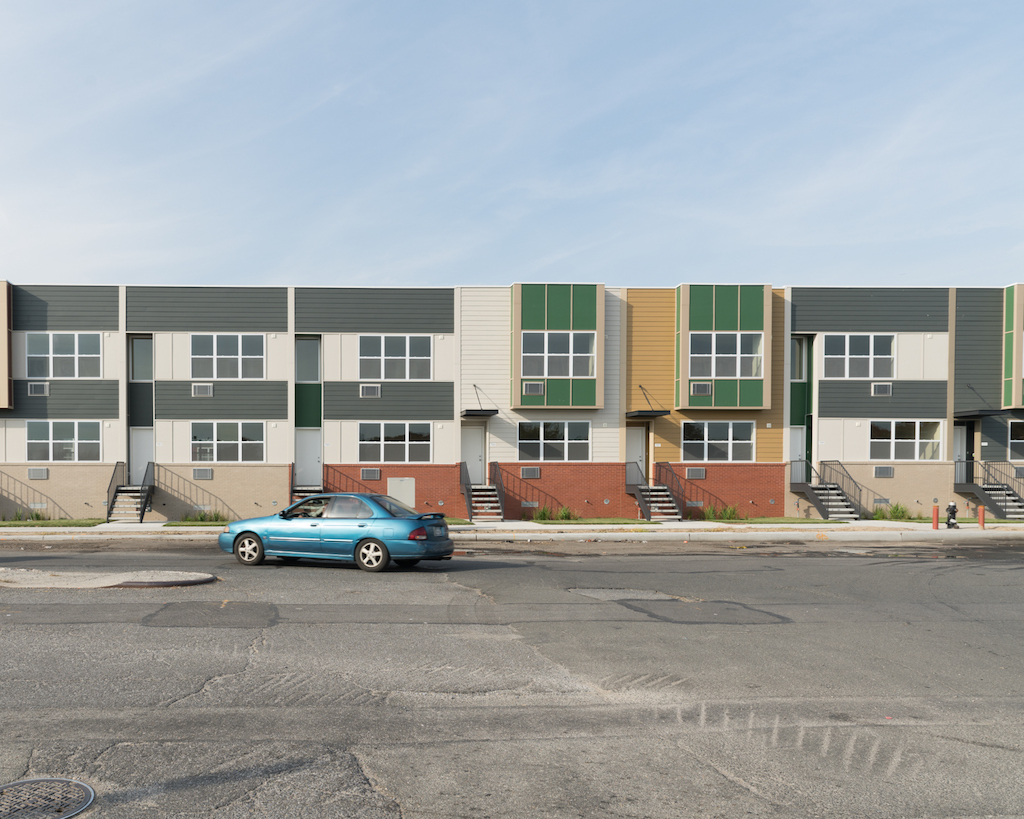
Prefabricated doesn’t mean identical — a rhythm of colors and alternating recesses and projections give distinct identities to these affordable Nehemiah homes. | Spring Creek, Brooklyn
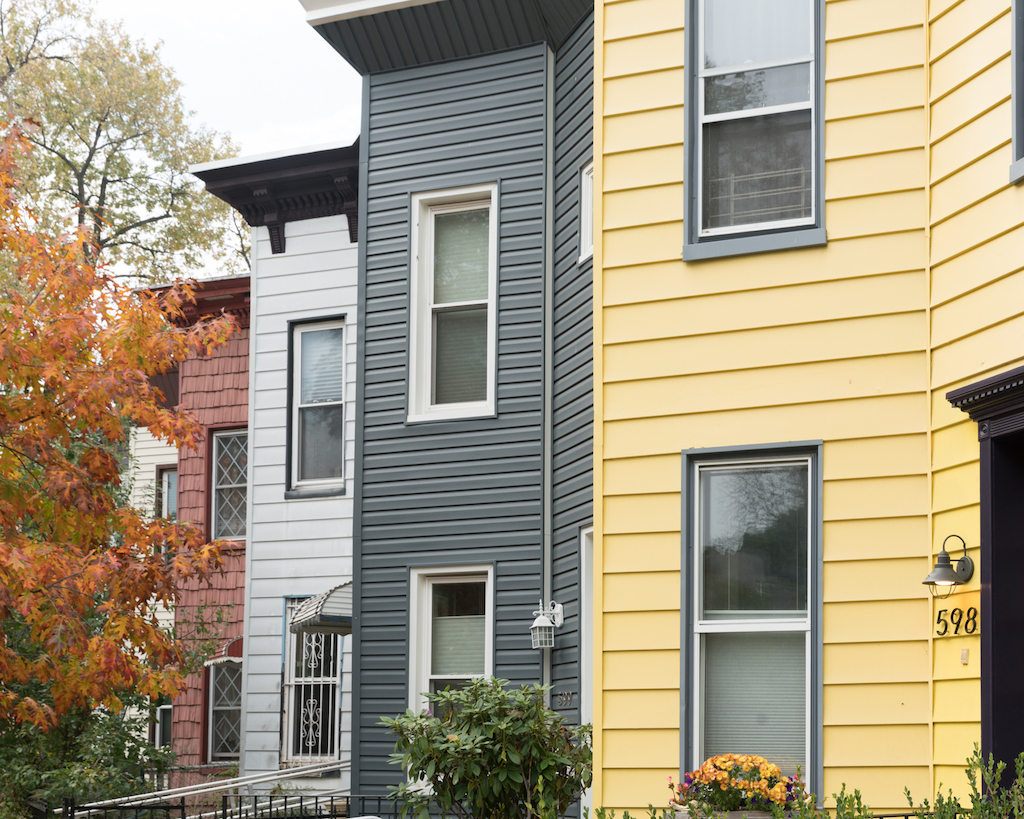
Different patterns of siding and different bold colors distinguish the houses in this otherwise repetitive row. | Greenwood Heights, Brooklyn
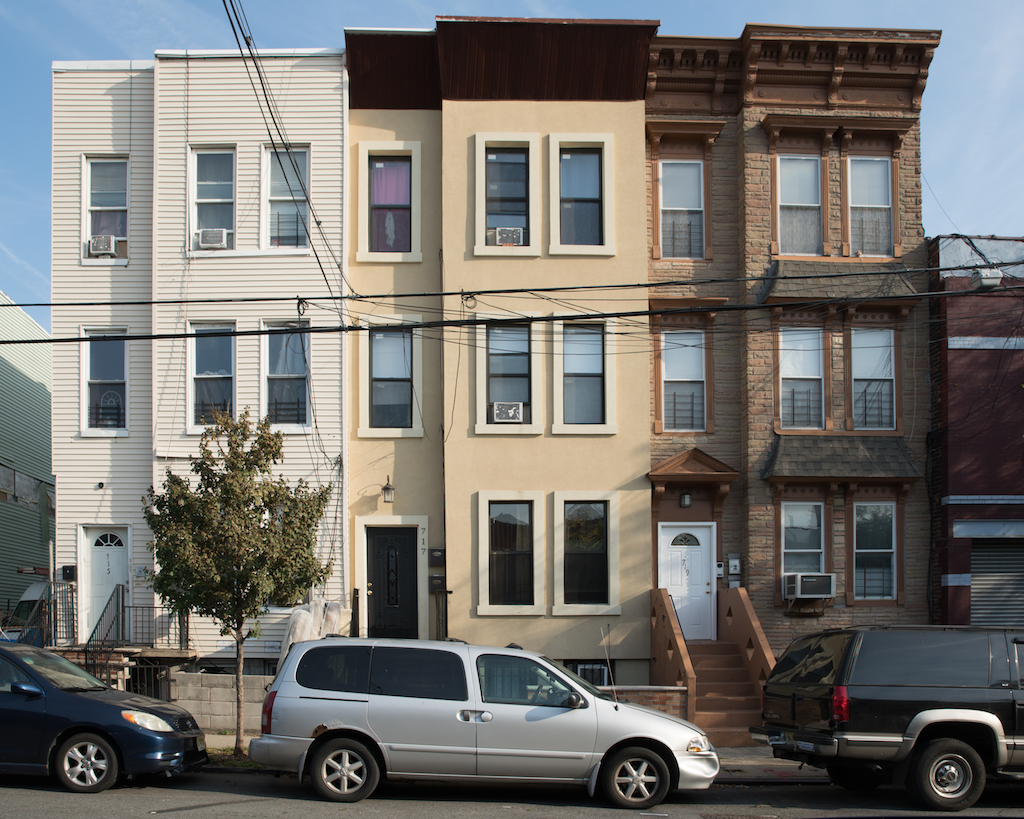
Vinyl, stucco, and faux stone veneers plus a lost cornice (left), modified cornice (center), and original cornice (right) make these triplets unique. | Port Morris, Bronx
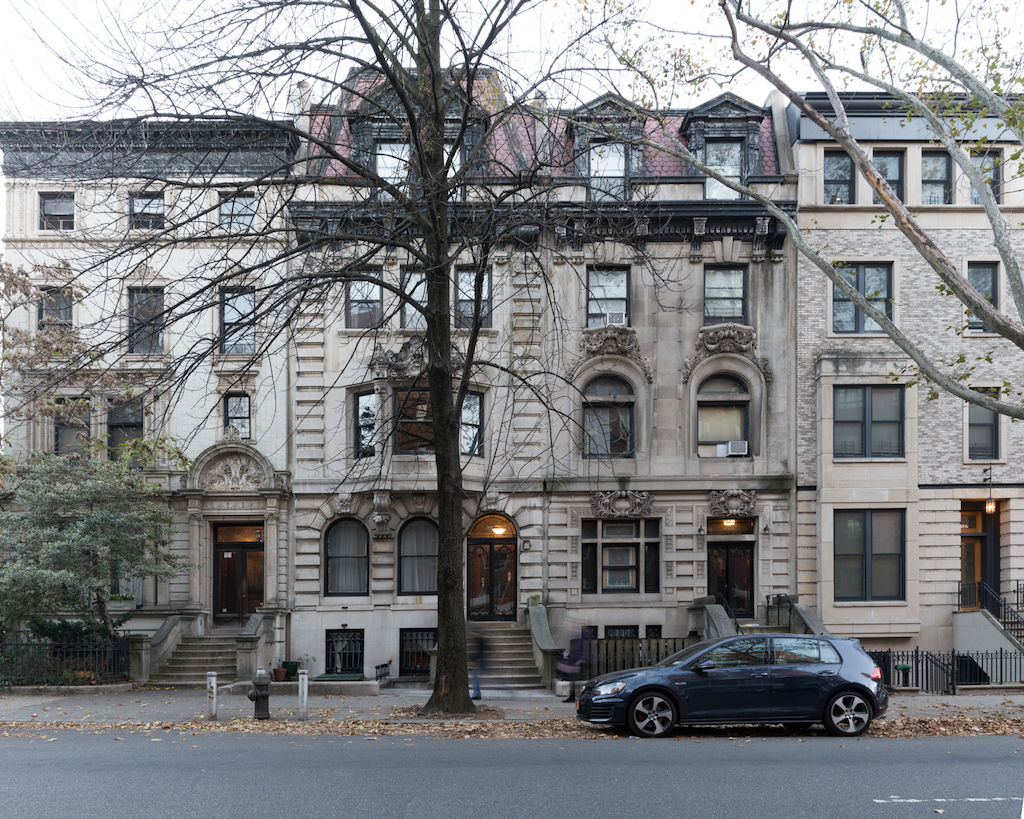
A modern renovation hides at the right in this otherwise original limestone row. | Park Slope, Brooklyn
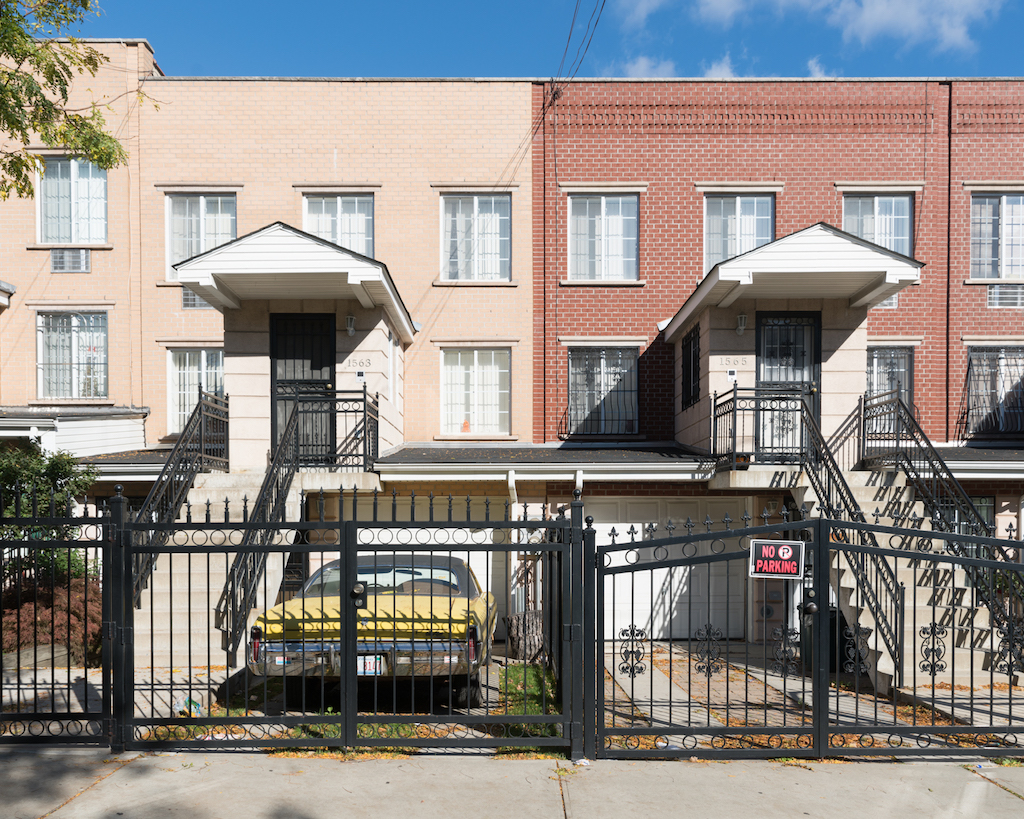
Steep stairs and prominent second-floor entryways above built-in garages define this newer row. | Brooklyn
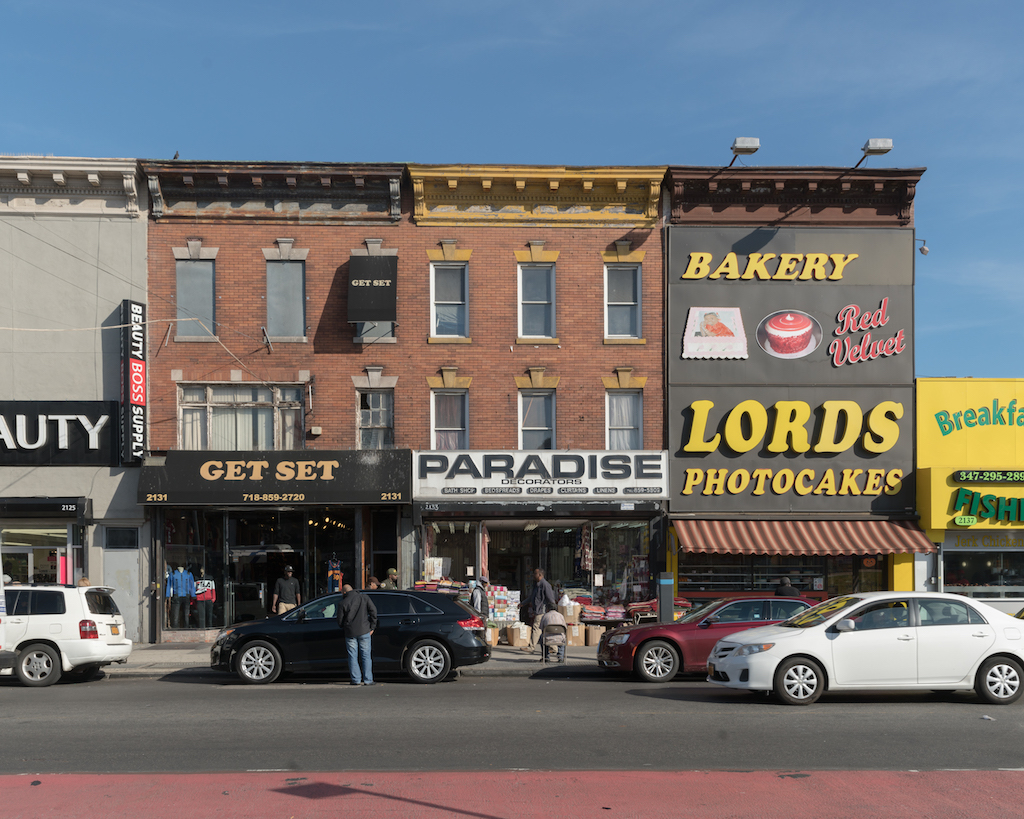
Lords Bakery announces its signature photo cakes on the right; the second story windows of Get Set offer a glimpse into the original building. | East Flatbush, Brooklyn
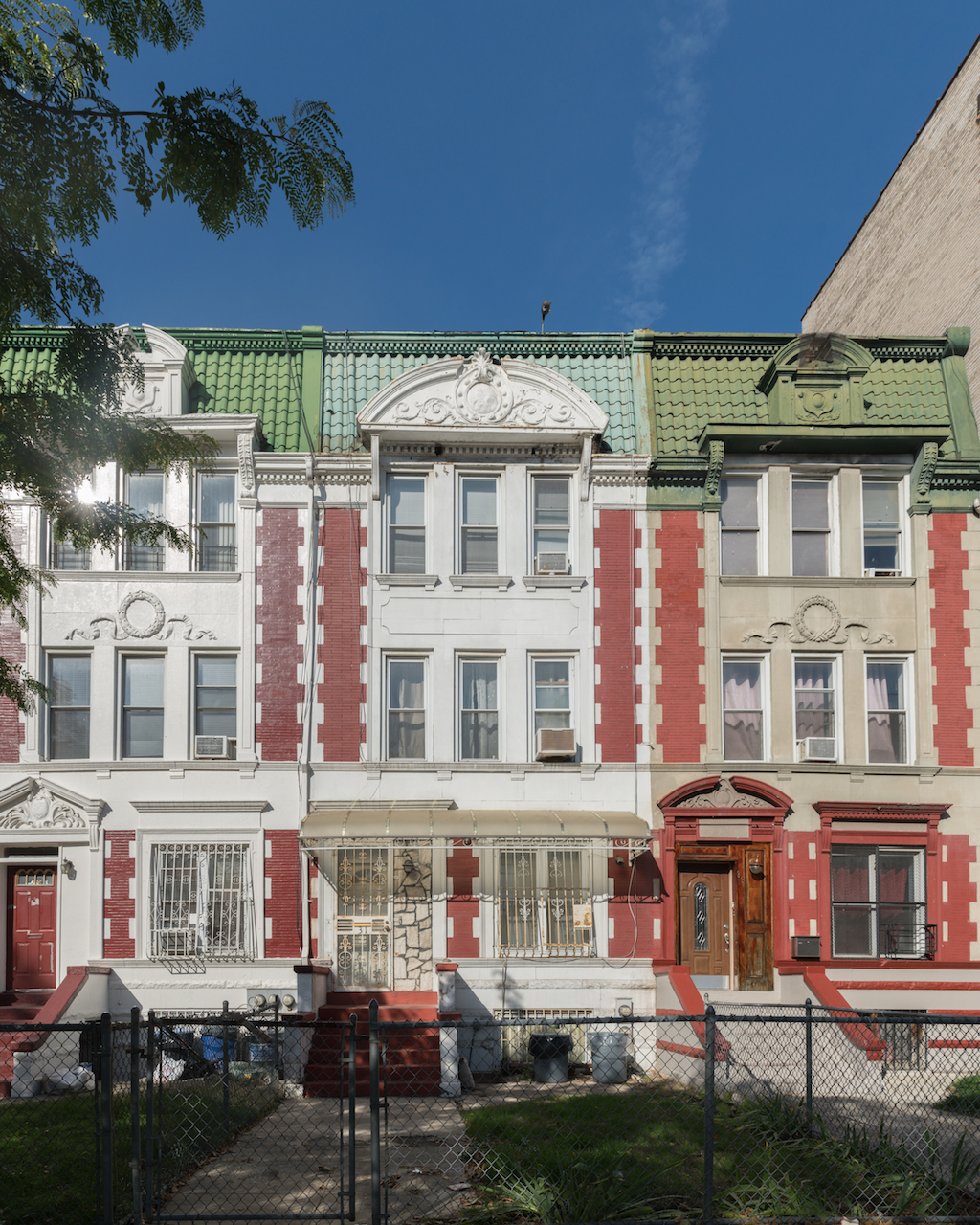
The original homes alternated ornament and roof details; in the middle, the current owners have traded a wood panel for Formstone and added a plastic awning. | Prospect Lefferts Gardens, Brooklyn
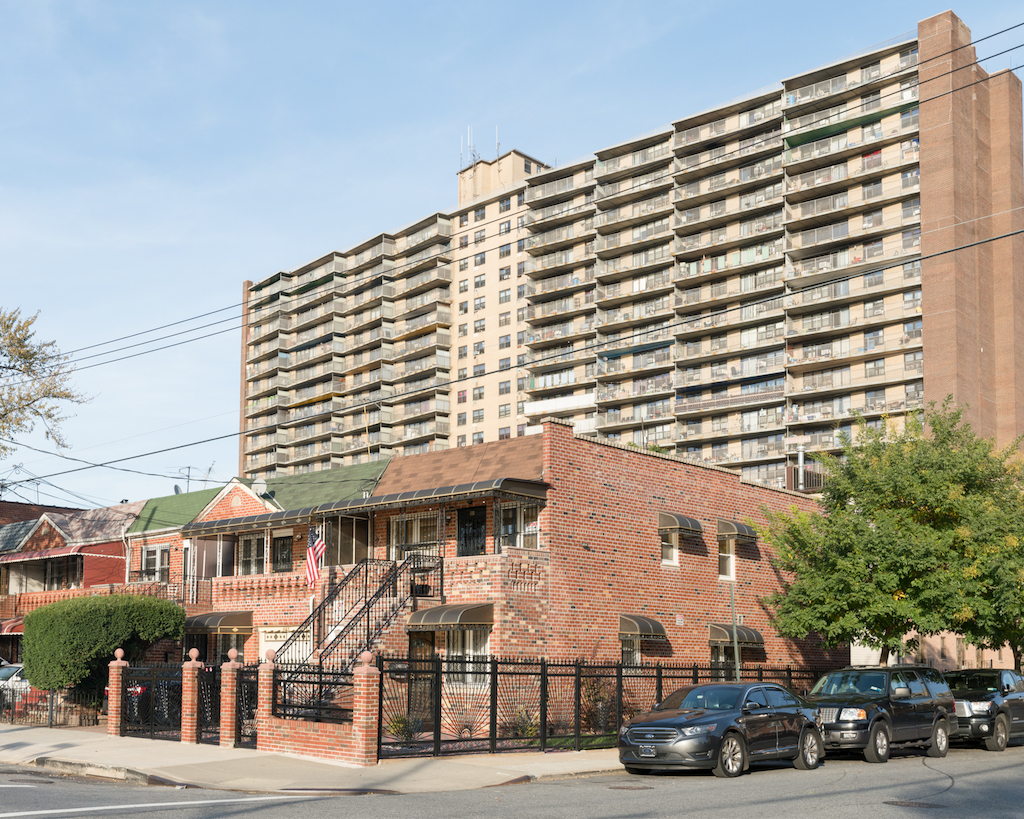
Brick mid-century row houses, typical of central and southern Brooklyn, contrast with a concrete and brick mid-century tower. | Brooklyn
All photographs by Rob Stephenson.
The views expressed here are those of the authors only and do not reflect the position of The Architectural League of New York.
